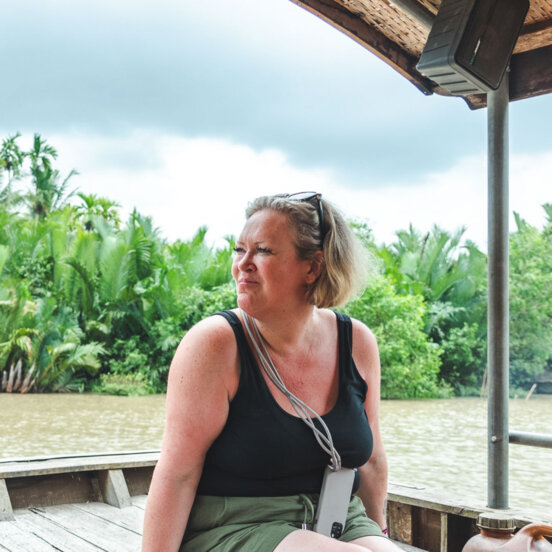Star wars: is Nevada’s new dark-sky destination the best in the world?

If the Milky Way means more to you than a childhood chocolate bar then you’ll be excited to learn that the Silver State of Nevada – home to Las Vegas and Celine Dion – has just launched its first dark-sky route between Death Valley National Park and Great Basin National Park. Just in time for the new Star Wars series, too.
The state has long been renowned for having some of the darkest and quietest skies on earth, congregating at Massacre Rim, one of only seven designated Dark Sky Sanctuaries in the world, disturbed by zero light pollution. But Nevada’s first dedicated astronomy route takes things to the next level, connecting two International Dark Sky Parks and five rural towns.
It’s impressive stuff. But where else on earth can you see the stars? We mean really see them. Front-row seats to a celestial cinema that’ll make your jaw drop. Here’s our constellation of the best stargazing locations in the world. Just you and the sky, heavenly.
Eyes on the skies in Portugal

In the Alentejo, Portugal’s rural breadbasket, the Alqueva Dark Sky Reserve makes for a superlative spot to see the starry vault. Why? The world’s first Starlight Tourism Destination and Unesco-listed heritage site lays on 3,000 sq m of light-pollution-free skies.
Activities abound, including astro-photography workshops and canoeing on the park’s Great Lake after dark, followed by some good old-fashioned stargazing at the park’s world-famous observatory.
But don’t miss the chance to see Portugal in the daytime, with a sunset cruise in Lisbon, wine tasting in the Douro Valley and surf lessons in chic Baleal. It’s a country that demands five stars.
Celestial fireworks in South Africa

OK, so Kruger National Park isn’t in the officially designated Dark Sky places pantheon, but it should be. And probably will be soon. Why? Kruger is much more remote than its popularity suggests. Plus, it’s a whopping 7,500 square miles of wild untamed wilderness, which means light pollution on its open savanna grasslands and bushveld is as good as zero.
Looking up is a stellar experience: bring your lion-spotting spectacles and you’ll see the Southern Cross, Scorpio and the rings of Saturn. Adding a nighttime astronomy experience to your game-drive itinerary – this is the spiritual home of the Big Five, after all – is a must on your visit to Kruger National Park.
What else is there to do in South Africa once you’ve seen the stars? Abseil down Table Mountain, sink wine in Stellenbosch and explore arty Joburg, of course.
It makes sense that Star Wars was filmed in Jordan’s other-worldly Wadi Rum
Heavenly highlights in Argentina

Three hundred days of dry weather a year and a lack of atmospheric pollution makes El Leoncito National Park one of South America’s astro-tourism hotspots. Unparalleled sky transparency attracts scientists, too: the park is home to two observatories – Félix Aguilar and the El Leoncito Astronomical Complex – both open to the public.
The Andean area’s high altitude also makes it ideal for another of the universe’s magical wonders: wine. Mendoza, Argentina’s leading wine region, is down the road for a wine-making (and drinking) experience to have you seeing stars. You can gaze up at God’s glittering tapestry in the vineyards – with a malbec in hand, shaking off any fuzzy head with cave dining, glacier hikes and Patagonia kayaking across the rest of the country.
Desert darkness in Jordan

Somehow it makes sense that Star Wars: Rogue One was filmed in this otherworldly setting, with its Mars-like red rock formations and vast open spaces. That it’s also called the Valley of the Moon strengthens its connection with the firmament.
When the sun goes down on Wadi Rum in Jordan’s desert region, those same rock formations do an excellent job of protecting your eyes from any distant light pollution. The result? The Triangulum Galaxy (Messier 33 to its friends) is visible to the naked eye. Dazzling.
A glamping experience in Jordan gives you those dreamy scenes, along with a secret hike to Petra and some super chilling in the Dead Sea – not to mention a stay in one of National Geographic’s favourite eco lodges.
Starry, starry nights in Japan

Iriomote-Ishigaki National Park in the Okinawa Prefecture is a special spot – the first place in Japan to receive an International Dark Sky Places gong, back in 2018. In fact, it was only the second place in the whole of Asia at the time – behind South Korea’s Yeongyang Firefly Eco Park.
Japan’s magnificent park is spread out over the Yaeyama Islands, the remotest part of the country. On a clear night you can see up to 84 of the 88 constellations recognised by the International Astronomical Union. Be sure to book a few days, bookended with days spent learning the art of sumo, dining with a trainee geisha and meditating in a temple with monks across the rest of the country, too.
Find out more about Flash Pack adventures right here.
Got a story or adventure that could inspire a solo traveller like you? Tag @flashpack on social or email [email protected] to be featured.










